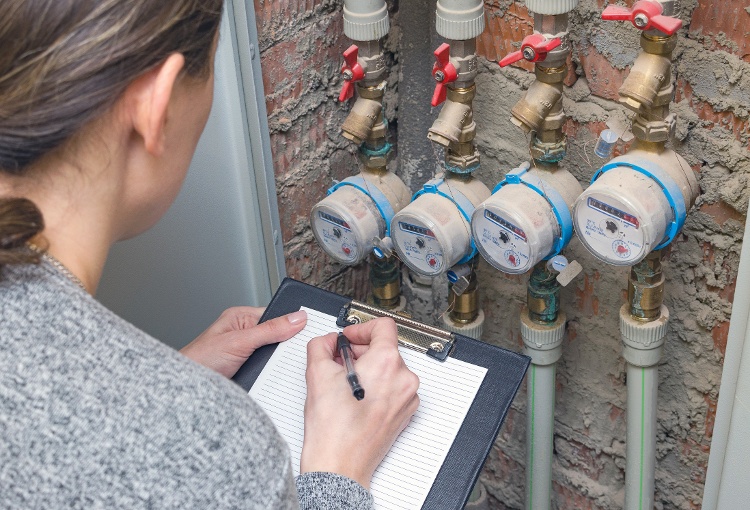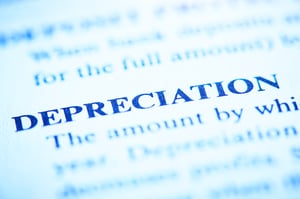If you’re new to the rental property business you may have questions about who pays for the utilities. In some states, the local landlord-tenant laws regulate who pays for utilities, while in other areas there are no set rules.
There are benefits to paying for a tenant’s utilities, and also some potential drawbacks as well. To avoid misunderstandings between you and the tenant, it’s important to put everything in writing by using a landlord-tenant utility agreement.
In this article we’ll discuss:
- Some of the common ways to handle utilities
- Utility information to include in a rental agreement
- Where to find a landlord-tenant utility agreement online

Do Landlords or Tenants Pay for Utilities?
The type of rental property, state landlord-tenant laws, and the rental lease agreement can all determine whether a landlord or tenant pays for utilities such as electric, gas, internet, water, and trash collection.
For example, it’s much easier to have a tenant pay for the utilities in a single-family rental home because the utilities for the property aren’t being shared with other tenants. This also allows landlords of houses to charge a competitive rent when the tenant is required to pay for all utilities.
On the other hand, if you own a small multifamily rental property some of the utilities for the individual units may all be on a single or “master” meter. When utilities are master metered, the landlord pays the utility bills each month and passes the utility usage fees to the tenants by including the utilities in the rent or by charging additional rent.
General Guidelines for Utilities
Utilities in a rental property usually consist of electricity, gas, internet and cable, water and sewer, trash collection, and sometimes a security or alarm system.
Deciding who pays for utilities also affects the total rent the tenant pays, the number of bills you as a landlord need to pay, and the profitability of your rental property.
Including utilities in the rent could be a creative marketing strategy to attract great tenants. However, there’s also a risk that the tenant could waste a lot of water or electricity since they’re not paying the utility services bill, which reduces the profit you make from the property.
To minimize the risk of paying for utilities, a landlord can set a monthly cap on the utility expense. For example, the lease might state that if the total utility bill exceeds $150 per month, any overage will be billed to the tenant the following month as additional rent.
Here are some general guidelines to think about when deciding if the landlord or tenant should pay for utilities:
Price = Value
The price you set for a rental unit that includes utilities should reflect the value the tenant is receiving by renting your home. If your rental property is located in a part of the country with hot summers or frigid winters, tenants may be willing to pay a higher monthly rent for having electric and gas included.
Listing Appeal
Including utilities in your rent can give you a competitive edge to find and keep the best possible tenants. Your rent will be higher than a landlord who doesn’t offer utilities, so be absolutely sure to stress the fact that utilities are included when you’re marketing your property for rent. Otherwise, prospective tenants will think that your home is overpriced.
Property Maintenance
Making sure your property is being maintained can be another benefit of including utilities as part of the rent. For example, tenants who have to pay the water bill may cut back on watering the trees and shrubs. Before you know it, the yard will look like a desert, and you’ll end up spending a lot of money redoing the landscaping in between tenant turns.
Perks & Convenience
The convenience of renting a place that includes utilities can be very attractive to some tenants. Many may be willing to pay a higher rent in exchange for the perk of you handling all of the bills. Plus, you’ll be saving your tenant from the extra time and trouble of setting up utility accounts and having to pay an extra deposit.

How to Handle Utilities
Prospective tenants will be making phone calls and checking online rental listing websites to compare your property to the other available rentals on the market. As a landlord, you should do the same thing.
Research which utilities the competition is including in the rent and how much extra they’re charging. Although how landlords handle activities varies from market to market, here are the typical ways that utilities are handled between landlords and tenants:
Utility Responsibility
- Electricity Tenant if single-family varies if multifamily
- Gas Varies
- Water Tenant if single-family varies if multifamily
- Sewer Varies, oftentimes included in the water bill
- Trash Varies, oftentimes included in the water bill
- Internet Tenant, but can be paid by landlord as a perk to the tenant
- Cable Tenant, but can be paid by landlord as a perk to the tenant
- Security Varies
Utility Information to Include in a Lease
Some rental lease agreements itemize each utility and the party responsible for paying. Other leases simply state which (if any) utilities the landlord pays with the tenant responsible for arranging and paying for the rest.
Either method is legal, and your local property manager can advise you on what is customary for the market your rental property is in.
Review the utilities currently used by your property, and think about future utilities that might be provided. In most cases, your rental lease agreement should include who pays for the following utilities:
- Electric
- Gas
- Water, sewer, trash
- Internet and cable
If your home is located in an HOA, sometimes the homeowners association rules will specify that certain utility providers be used. When that’s the case, be sure to clearly state this in the lease and include the name and contact information for the required utility provider.

Multifamily Utilities
Deciding how the utilities are paid in a small multifamily property is a little trickier than a single-family rental. Oftentimes, one or more utilities in a duplex, triplex, or fourplex have a single master meter that provides service to the property.
Usually, this occurs with water service, where there is one utility account shared for all of the units. Some landlords include this utility in the rent, others install a submeter that tracks the water usage of each individual unit.
However, installing a submetering system isn’t legal in all areas, and you may not be able to “mark up” a tenant’s water bill. Ask your property manager to explain what your state allows, or check with your local water company for ideas on how to monitor and conserve the water use in your property.
Finally, be sure to disclose to the tenant in your rental agreement how any utilities are shared.
If your local landlord-tenant laws allow, note in your lease that any charges for shared utilities that are passed through to the tenant are treated as additional monthly rent. By charging utilities to the tenant as extra rent, you’ll avoid having a tenant try to pay only the rent on the unit and not their fair share of utilities.
Sample Landlord Tenant Utility Agreement
A recent post on the BiggerPockets blog lists 25 crucial clauses landlords need for a highly enforceable lease, including a great utility clause for rental agreements. The clause addresses issues such as:
- Landlord and tenant responsibilities for utilities.
- How sub-metering works (if applicable to the property).
- Requirement to pay utility bills on time.
- Utility companies selected by the landlord.
- Acknowledgment by the tenant that the landlord is not liable for loss or damage sustained by the tenant due to utility failures.
Some of the best online sources for finding landlord-tenant utility agreements and rental agreement clauses include:
- BiggerPockets blog: 25 Crucial Clauses Landlords Need for a Highly Enforceable Lease
- Law Insider for sample utilities clauses
- Screening Service’s utility agreement
- LegalTemplates’ rental and lease agreement templates
- eForms lease addendum templates
- US Legal Forms state-specific legal forms

How are Utilities Handled Between Tenants?
Most utility companies will set up a landlord’s account when you own rental property. Also known as a clean-up, revert to owner, or interim billing account, utilities automatically revert to the landlord’s account in between tenant turns.
This way, utilities are always one for any maintenance providers that need to enter the premises, and you’ll also know that everything is working when showing your available property to the next qualified tenant.
One pointer to keep in mind: If utilities are currently in your name, require a new tenant to provide proof that any utilities they’re directly responsible for have been transferred into their name prior to the tenant moving in. You can also double-check with the utility company to verify that the utilities have been transferred out of your account.
Final Thoughts
Paying utilities can cost a tenant hundreds of extra dollars each year, not to mention an extra deposit for each utility account. Depending on the rental market, a landlord who offers to include one or more utilities in the rent may be able to attract and keep better tenants.
To make sure a tenant doesn’t overuse the utilities, a landlord can put a cap on the amount of monthly free utilities and charge the tenant extra for any overage. No matter what the arrangement, it’s important to put in writing how utilities are paid and by who by using a good landlord-tenant utility agreement.









